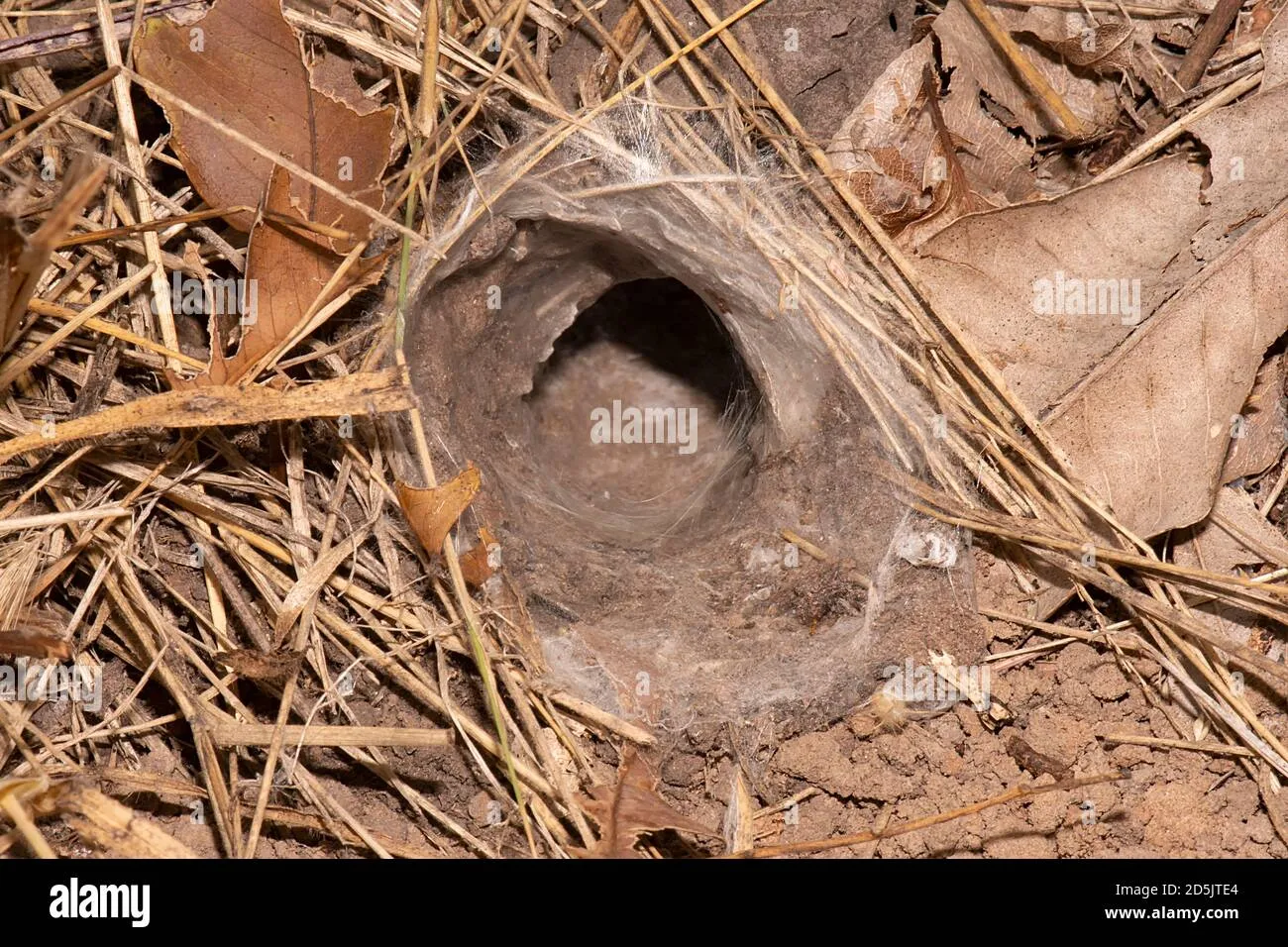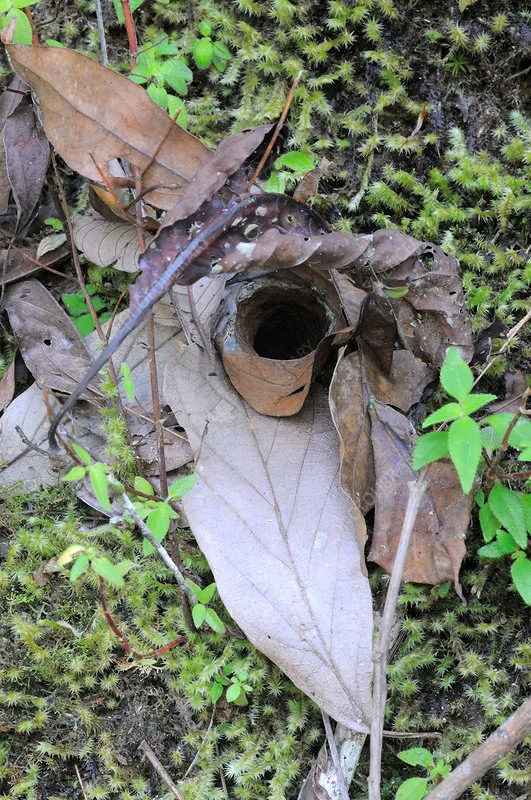Encountering a tarantula in its burrow can be both fascinating and, at times, a cause for concern. Whether you need to relocate your pet tarantula or address a burrow in your home, understanding the process of safely coaxing a tarantula out of its burrow is crucial. This guide provides a step-by-step approach, emphasizing the tarantula’s safety and your own.
Understanding Tarantula Behavior and Burrows
Before attempting any removal, it’s essential to understand why tarantulas burrow and the different types of burrows they create. This knowledge will inform your approach and increase your chances of success without harming the spider.
Why Tarantulas Burrow
Tarantulas burrow for several reasons, primarily for protection from predators, to regulate their body temperature and humidity, and as a safe place to molt. Burrowing provides a secure environment where they can feel safe, especially during vulnerable times like molting. The depth and complexity of the burrow often depend on the species and the environment.
Types of Tarantula Burrows

Tarantula burrows vary significantly based on the species. Some tarantulas construct simple, shallow burrows, while others create elaborate, deep tunnels with multiple chambers and escape routes. Understanding the type of burrow your tarantula has built helps you anticipate the challenges of removal. For instance, a deep burrow may require more patience and a different approach than a shallow one. Consider the species’ natural habitat when assessing the burrow; this will provide clues about its construction and purpose.
Assessing the Situation
Before you begin, carefully assess the situation to ensure the safety of both you and the tarantula. This includes identifying the tarantula species and evaluating the accessibility of the burrow. A careful assessment will help you determine the best and safest method for removal.
Identifying the Tarantula Species
Identifying the tarantula species is the first crucial step. Different species have different temperaments and venom potencies. Knowing the species helps you anticipate its behavior and take appropriate safety precautions. Consult a tarantula identification guide or an expert if you’re unsure. Observe the tarantula from a safe distance to gather information about its appearance, size, and any distinctive markings.
Evaluating the Burrow’s Accessibility

Carefully examine the burrow’s location and construction. Is it in a hard-to-reach spot? Is the entrance easily accessible? Are there any obstacles nearby that could complicate the removal process? Note the substrate and its moisture content, as this can influence your approach. Assess the surroundings for potential hazards, such as loose objects or sharp edges, and clear them to minimize the risk of injury during the removal.
Gathering Necessary Tools and Equipment
Having the right tools and equipment is essential for a safe and effective tarantula removal. This includes safety gear to protect yourself and optional tools that can assist in coaxing the tarantula out of its burrow.
Essential Safety Gear
Wear appropriate safety gear to protect yourself from a bite. This includes thick gloves that can withstand a tarantula’s fangs, long sleeves, and eye protection. Consider wearing a face shield if you are working with a particularly defensive species or if you are unsure of the tarantula’s temperament. Safety first!
Optional Tools for Burrow Eviction

Depending on the situation, you may need additional tools. A soft brush or feather can gently coax the tarantula out. A small container or cup can be used to capture the tarantula once it emerges. A spray bottle with water can be used for the flooding method. If you need to excavate, small hand tools like a trowel or spoon can be helpful. Always prioritize gentle methods over forceful ones.
The Gentle Removal Method
When possible, use gentle methods to encourage the tarantula to leave its burrow. This reduces stress on the spider and minimizes the risk of injury to both you and the tarantula.
Using a Soft Brush or Feather
Gently brush the tarantula with a soft brush or feather near the entrance of the burrow. The goal is to create a slight disturbance that encourages the tarantula to investigate. Avoid sudden movements or direct contact, as this may startle the spider. Patience is essential; it may take time for the tarantula to react.
Flooding the Burrow

Gently pour or spray a small amount of water into the burrow. This can simulate rainfall and encourage the tarantula to come out, especially if the burrow is too dry. Be very careful not to flood the burrow excessively, as this could stress or harm the tarantula. Observe the tarantula’s behavior closely for any signs of distress.
Providing Alternative Habitat
If you’re relocating the tarantula, have a suitable new habitat ready and waiting. Place it near the burrow entrance and provide the same conditions the tarantula is used to – substrate, hiding places, and a water source. Sometimes, simply making the new habitat more appealing can encourage the tarantula to move on its own.
The Direct Removal Method
If gentle methods are not successful, direct removal may be necessary, but this should be a last resort. It carries a higher risk of stress and potential injury. Always prioritize the safety of the tarantula and yourself.
Carefully Excavating the Burrow

If the burrow is accessible, you may need to carefully excavate it. Use small tools to gently remove the substrate. Work slowly and deliberately to avoid startling or injuring the tarantula. Have a container ready to capture the tarantula as it emerges. Make sure the container is escape-proof and has air holes.
Using a Specially Designed Tarantula Hook
A tarantula hook is a specialized tool designed to gently coax or lift a tarantula. Use the hook to gently nudge the tarantula or, if needed, to gently lift it out of the burrow. Exercise extreme caution and avoid sudden movements. This method can be stressful for the tarantula, so use it only when necessary and with utmost care.
Important Considerations Post-Removal
After removing the tarantula from its burrow, take some important steps to ensure its well-being and prevent future burrowing issues.
Checking the Tarantula’s Health

Once the tarantula is out of its burrow, carefully inspect it for any signs of injury. Ensure the tarantula is moving normally and its abdomen is not damaged. Provide a safe and comfortable environment in its new enclosure, with proper temperature, humidity, and a water source. Monitor the tarantula’s behavior for any signs of stress or illness.
Cleaning and Inspecting the Burrow Area
If you’re removing the tarantula from your home, thoroughly clean and inspect the burrow area. Look for any remaining tarantula debris or remnants of the burrow structure. If it was a pet tarantula that has been relocated, clean the old enclosure and get it ready for the next occupant. This also helps prevent the return of any remaining tarantulas.
Preventing Future Burrowing
To prevent future burrowing, especially in unwanted areas, ensure that the tarantula’s enclosure is secure and escape-proof. Seal any cracks or openings in your home that could provide access for tarantulas. Consider using natural repellents, such as cedar chips, in areas where you want to deter tarantulas, but be mindful of any potential hazards for your pets or the environment.
Safely getting a tarantula out of its burrow requires patience, knowledge, and the right approach. By understanding tarantula behavior, assessing the situation, and using appropriate methods, you can ensure a safe and stress-free removal process. Remember to prioritize the well-being of the tarantula and your own safety throughout the process. Whether you are dealing with a pet or a wild tarantula, following these guidelines can help you resolve the situation effectively.
